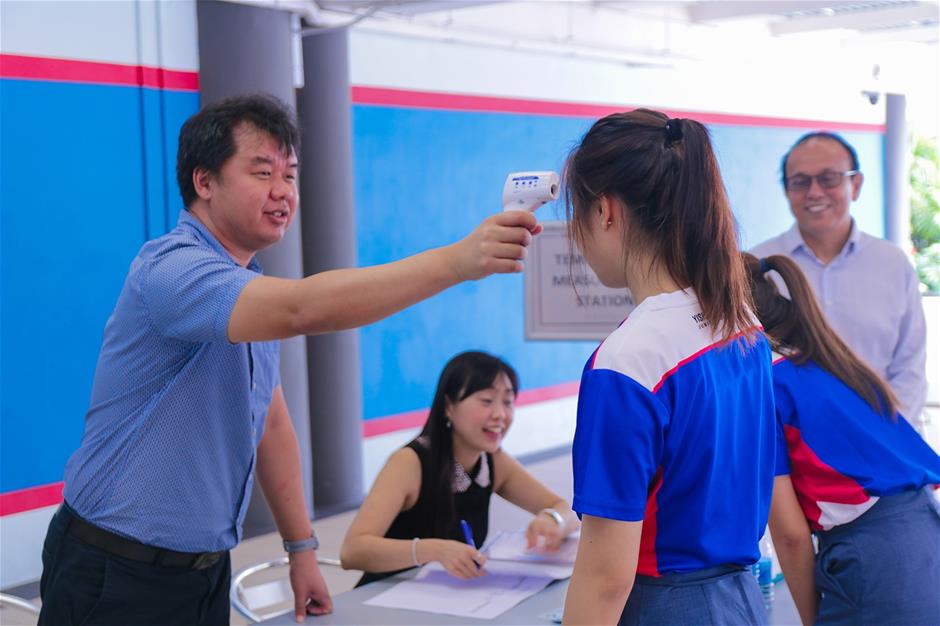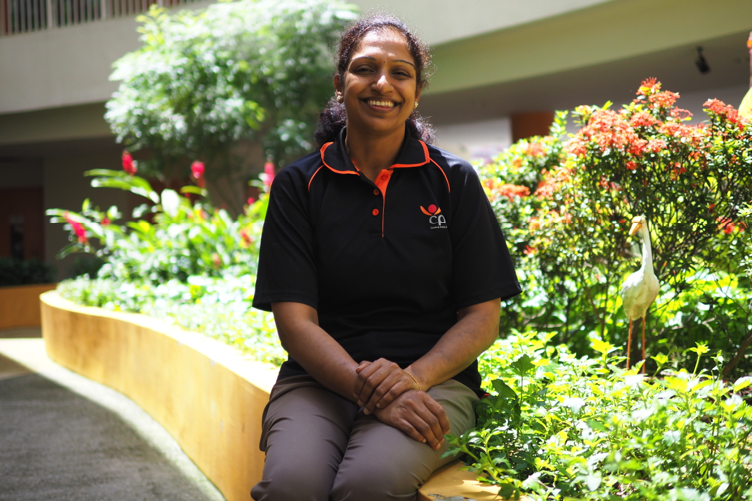Dr Tay Mia Eng, Nanyang Polytechnic, President’s Award for Teachers 2022 Finalist
“Would you prefer to eat food as medicine or to eat medicine as food?”
This is a question that Dr Tay Mia Eng is fond of posing to turn people’s attention to eating well. It is a job hazard, she concurs.
As a senior lecturer in the School of Applied Science at Nanyang Polytechnic (NYP), she has spent the past 13 years espousing the benefits of healthy eating to her students pursuing courses in Food Science & Nutrition.
What is interesting about the nature of her courses is that her students typically come to class with already long-held views about the subject, especially in food-crazy Singapore.
Take for instance, the adolescent love for fast food. Even her own students, who should have a heightened appreciation of good nutrition, are not immune to brushing off its potential ill effects. And do not mistake for a second that foodies make good food science students – unfortunately, no food is consumed as part of learning in the classroom.
All these add to the challenges of Mia Eng’s role, as some of these views may need unlearning and redressing. She takes it all in her stride, as she constantly dreams up new methods to get her students on track and embrace what they learn.
Influencing the next generation of nutritional advocates
Mia Eng thinks the best way for her students to learn is through experience.
In her course on Lifespan Nutrition, which covers eating disorders, she channels the power of walking in someone else’s shoes. As they enact scenarios of treating patients, her students don’t only play the part of the dietician dispensing advice; they also act out the parts of the patient and patient’s parents or guardians.
.jpg)
The role-playing teaches them empathy and brings deeper issues to the surface; the students then better appreciate how they need to look beyond nutritional concerns to the social and emotional challenges that lie behind these complex medical conditions.
Similarly, to liven up what could be a very clinical topic of food labelling, Mia Eng doesn’t simply dispense regulations but would assign case studies: Students have to set up imaginary companies with different labelling requirements. Doing so encourages them to practise and acquire the skills to interpret and evaluate food regulations to ensure compliance. Presenting the results can also improve their speaking skills and may even bring out their creative and entrepreneurial streak.
Mia Eng recalled how a student convinced a school canteen’s bubble tea vendor to collaborate on a campaign to get fellow students to reduce the sugar level in their drink in exchange for a small discount. Another created a compilation of simple but healthy recipes targeted at her peers, while others produced Youtube videos or content that were uploaded to social media platforms.
These methods are all part of the authentic learning approach that Mia Eng subscribes to, to get her students to understand the real-world relevance of what they are learning. This overall move in education towards applied learning has even cascaded down to secondary schools, she noted, pointing out how her Secondary Two daughter had been tasked to design a diet for diabetics as part of her Food and Consumer Education class.
Cooking up collaborations with the community
Mia Eng’s expertise in food and nutrition has seen different organisations coming forward to collaborate with her in various community health initiatives (she has a PhD in Public Health Nutrition and Dietary Habits). One of these is TOUCH Diabetes Support (TDS), whom her students worked with on a series of healthy eating projects over the past few years.
As part of a festival to raise awareness for diabetes in November 2019, TDS sponsored the production of a recipe book developed by one of her students for her final-year project, comprising dishes that adolescents can cook for their families.
TDS then requested for some of the recipes in the book to be adjusted for elderly folks with poor appetites. Together with her students, Mia Eng tweaked the recipes and conducted a cooking demonstration at a Senior Activity Centre. The “Bombay toast” they made uses basic ingredients like bread, eggs and milk. It is simple to cook but boasts a high nutritional content – perfect for seniors with small appetites.
Following the success of these projects, TDS partnered with three of Mia Eng’s students to conceptualise another recipe book, this time for elderly diabetic patients. Called ‘Eat Well Under $4’, the dishes can be easily reproduced using no special equipment except common cookware.
.jpg)
Apart from these TDS community initiatives that Mia Eng had a hand in over the years, she engineered practical collaborations with organisations such as Singapore Heart Foundation, National Transport Workers’ Union and People’s Association to develop healthier dietary options for heart patients, bus drivers and members of the public.
Learning about the job – and themselves – on the job
Mia Eng wears another hat at Nanyang Polytechnic, that of a Para-Counsellor. With her experience and industry insights, she encourages learners to understand themselves and identify their strengths, before sharing with them the wide range of career roles available in the food science industry.
“Knowing what you like is very important in order to find a good career fit for yourself. At different stages of our life, there will be different things that matter to you. What I hope my students can take away from their time here with me is to love learning and to continue learning even after they have left school.”
To this end, she is deeply involved in her school’s Internship and Work-Study Programmes. As a master coach for workplace learning design, she works with food companies such as Dough Culture, Gardenia and Leong Guan (a noodle manufacturer) to develop On-The-Job Training (OJT) blueprints – comprehensive sets of training guidelines that companies can use to guide students there on internship or traineeship stints.
By spelling out the knowledge, skills and attitudes needed for the job roles, these blueprints provide a multitude of benefits for its stakeholders. Internship students gain clarity about their role and purpose during OJT, while companies can use them to train other staff in similar roles. Student internship mentors like Mia Eng also use the documentation to ensure that students are picking up the skillsets that are required of them.
These efforts come together to ensure her students understand themselves better, and think more deeply about their future career paths.
“Knowing what you like is very important in order to find a good career fit for yourself. At different stages of our life, there will be different things that matter to you,” Mia Eng pointed out.
“What I hope my students can take away from their time here with me is to love learning and to continue learning even after they have left school.”



.jpg)


